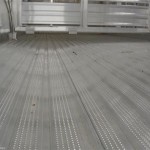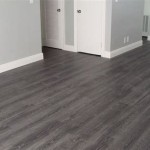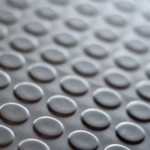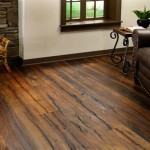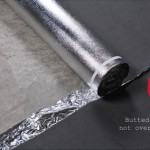Red Oak Wood Flooring Reviews: A Comprehensive Overview
Red oak wood flooring is a consistently popular choice for homeowners and builders alike, prized for its balance of affordability, durability, and aesthetic appeal. This article provides a comprehensive review of red oak flooring, examining its key features, advantages, disadvantages, cost considerations, and maintenance requirements, offering an informed perspective for potential buyers.
Red oak belongs to the species *Quercus rubra*, a hardwood native to North America. It is characterized by its reddish hue, though variations in color can occur depending on the specific tree and its growing conditions. The grain pattern is generally open and pronounced, providing a distinctive visual texture. Its widespread availability and relatively fast growth rate contribute to its cost-effectiveness compared to other hardwood options.
Understanding the Key Characteristics of Red Oak Flooring
Several characteristics define red oak flooring and influence its performance and suitability in various environments. These include hardness, grain pattern, color variation, and susceptibility to moisture.
Hardness: The Janka hardness test measures the resistance of wood to indentation. Red oak scores approximately 1290 on the Janka scale, making it a moderately hard wood. This hardness provides good resistance to dents and scratches under normal household use. While not as hard as some other hardwood species like Brazilian cherry or hickory, red oak is sufficiently durable for most residential applications. Its hardness also makes it suitable for use in moderate-traffic commercial spaces.
Grain Pattern: Red oak possesses a prominent, open grain pattern. This distinctive characteristic is highly valued by many homeowners, adding character and visual interest to a room. The open grain also readily accepts stains, allowing for a wide range of color customization options. The grain can mask minor imperfections and scratches, contributing to the flooring's longevity in appearance.
Color Variation: The natural color of red oak ranges from a light tan to a reddish-brown. The heartwood, the inner core of the tree, typically exhibits a deeper color than the sapwood, the outer layer. This natural variation in color is often considered a desirable feature, adding depth and complexity to the floor. However, significant color variation might be undesirable in spaces where a uniform appearance is preferred. Grading systems for red oak flooring take color variation into account, offering different grades with varying degrees of uniformity.
Moisture Susceptibility: Like all wood flooring, red oak is susceptible to moisture. Excess moisture can cause the wood to expand, leading to cupping, crowning, or buckling. Conversely, excessively dry conditions can cause the wood to shrink, resulting in gaps between the boards. Red oak is more porous than white oak, making it slightly more vulnerable to water damage. Therefore, it is crucial to maintain a stable humidity level in the home, ideally between 30% and 50%, to prevent moisture-related problems. Proper acclimation of the flooring prior to installation is also essential.
Advantages and Disadvantages of Choosing Red Oak
Choosing any flooring material involves weighing its pros and cons. Red oak offers a compelling combination of benefits, but it is not without its drawbacks.
Advantages:
Affordability: Red oak is generally more affordable than many other hardwood flooring options. Its wide availability and relatively fast growth rate contribute to its lower cost, making it an attractive option for budget-conscious homeowners.
Durability: While not the hardest hardwood option, red oak provides adequate durability for most residential applications. Its Janka hardness rating of 1290 indicates good resistance to dents and scratches. With proper care and maintenance, a red oak floor can last for decades.
Versatility: Red oak's neutral color and prominent grain pattern make it highly versatile. It can be stained in a wide range of colors to complement any décor. It pairs well with both traditional and contemporary design styles.
Availability: Red oak is readily available in a variety of widths, lengths, and grades. This widespread availability ensures a consistent supply and competitive pricing.
Easy to Work With: Red oak is relatively easy to cut, nail, and sand. This makes it a popular choice for both professional installers and DIY enthusiasts.
Disadvantages:
Moisture Sensitivity: As mentioned previously, red oak is more susceptible to moisture damage than white oak. This makes it unsuitable for installation in bathrooms or other areas with high humidity or potential water exposure. Proper sealing and a well-maintained humidity level are essential to prevent moisture-related problems.
Prone to Staining: Due to its porous nature, spills should be cleaned up promptly to avoid staining. Certain substances, such as red wine or pet urine, can permanently stain red oak if left unattended.
Grain Pattern Can Be Too Busy: While many appreciate the prominent grain pattern of red oak, some find it too busy or distracting. In smaller rooms, the active grain can make the space feel even smaller. Selecting a more subtle stain or a lower grade of red oak can help to minimize the impact of the grain pattern.
Cost and Installation Considerations
The cost of red oak flooring varies depending on several factors, including the grade of the wood, the width and thickness of the planks, and the installation method. Installation costs can also vary significantly depending on whether the project is a DIY endeavor or handled by a professional.
Material Costs: Red oak flooring is typically priced per square foot. The cost generally ranges from $3 to $8 per square foot for unfinished red oak, and $5 to $12 per square foot for prefinished red oak. Higher grades of red oak, with fewer knots and more uniform color, will generally command a higher price. Wider planks and thicker planks also tend to be more expensive.
Installation Costs: Professional installation costs typically range from $3 to $8 per square foot, depending on the complexity of the project and the experience of the installer. Installation methods include nail-down, glue-down, and floating. Nail-down installation is the most common method for solid hardwood flooring, while glue-down installation is often used for engineered hardwood. Floating floors are typically used with engineered hardwood and offer a faster, less expensive installation option.
DIY Installation: While DIY installation can save money on labor costs, it requires a certain level of skill and experience. Proper preparation of the subfloor is crucial to ensure a successful installation. Incorrect installation can lead to problems such as squeaking, unevenness, and premature wear. It is essential to research the installation process thoroughly and invest in the necessary tools and equipment before attempting a DIY installation.
Additional Costs: Additional costs to consider include the cost of underlayment, trim, baseboards, and finishing materials (for unfinished flooring). It is also important to factor in the cost of removing and disposing of existing flooring.
Prior to installation, it is critical to acclimate the red oak flooring to the environment. This involves storing the flooring in the room where it will be installed for several days to allow it to adjust to the temperature and humidity levels. Proper acclimation helps to minimize expansion and contraction after installation.
Furthermore, the subfloor needs to be clean, level, and dry. Any imperfections in the subfloor can telegraph through the flooring, resulting in an uneven surface. If the subfloor is not level, it may need to be leveled with a self-leveling compound or by sanding down high spots. Moisture testing of the subfloor is also essential to ensure that it is within acceptable limits. High moisture levels in the subfloor can lead to mold growth and damage to the flooring.
When selecting an installer, it is advisable to obtain multiple quotes and check references. A qualified installer will have the experience and expertise to ensure a proper and long-lasting installation.
Finally, it is important to ensure that the chosen stain and finish are compatible with red oak and are applied according to the manufacturer's instructions. Proper finishing is essential to protect the flooring from wear and tear and to enhance its appearance.

Reviews For Heritage Mill Red Oak Natural 3 8 In Thick X 4 1 Wide Random Length Engineered Hardwood Flooring 20 Sq Ft Case Pg The Home Depot

Reviews For Bruce American Originals Natural Red Oak 3 4 In T X 1 W Varying L Solid Hardwood Flooring 22 Sqft Case Pg The Home Depot

Reviews For Bruce American Originals Natural Red Oak 3 4 In T X 1 W Varying L Solid Hardwood Flooring 22 Sqft Case Pg The Home Depot

Reviews For Blue Ridge Hardwood Flooring Red Oak Natural Low Gloss 3 4 In Thick X 5 Wide Random Length Solid 20 Sqft Case Pg 1 The Home Depot

Reviews For Blue Ridge Hardwood Flooring Take Home Sample Red Oak Natural Solid 5 In X 7 Pg 2 The Depot

Reviews For Select Red Oak 3 4 In Thick X 2 1 Wide Random Length Solid Hardwood Flooring 19 5 Sqft Case Pg The Home Depot

French Oak Wood Floors Review Liz Pacini

Oak Vs Maple Floors Find Out Which Is Better Carlisle Wide Plank

Review Archives Lv Hardwood Flooring Toronto

Types Of Hardwood Flooring Forbes Home
Related Posts

